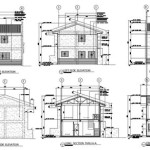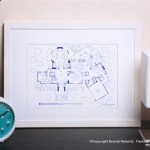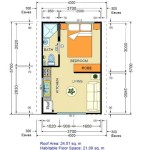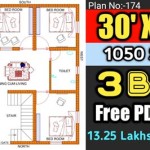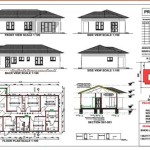How to Draw Up House Plans
Drawing up house plans is a complex process, but breaking it down into manageable steps can make it less daunting. Whether planning a small renovation or designing a new home from scratch, understanding the fundamentals is crucial. These steps provide a guide through the process, from initial conceptualization to detailed drawings.
Define Project Scope and Gather Inspiration
Before putting pen to paper (or cursor to screen), clearly define the project's scope. This involves identifying the purpose of the drawings, such as obtaining building permits, securing financing, or guiding construction. Additionally, gathering inspiration through browsing architectural magazines, online resources, and visiting model homes can provide valuable ideas and refine design preferences.
Create a Preliminary Site Analysis
Understanding the site is foundational to a successful design. A preliminary site analysis involves documenting key features of the property. This includes noting the property lines, existing structures, topography, and the location of utilities. Sunlight exposure, prevailing winds, and views are also important factors that can influence the design and placement of the house on the lot.
Develop a Bubble Diagram
A bubble diagram is a simple, visual representation of the spatial relationships between different rooms and areas within the house. It's a valuable tool for experimenting with different layouts and traffic flow. Begin by listing all the desired spaces, then represent each space as a bubble, experimenting with different sizes and arrangements until a functional layout emerges.
Refine the Floor Plan
Once satisfied with the bubble diagram, the next step is to develop a more detailed floor plan. This involves drawing the walls, doors, and windows to scale, using architectural conventions. It is essential to consider factors such as room sizes, furniture placement, circulation space, and building codes during this stage.
Develop Elevations and Sections
Elevations are drawings that show the exterior faces of the house, providing a visual representation of the building's height and architectural style. Sections are drawings that cut through the house vertically, revealing the internal structure and relationships between different levels. These drawings, along with the floor plans, provide a comprehensive view of the design.
Incorporate Building Codes and Regulations
Building codes and regulations dictate minimum standards for safety and construction. It is essential to research and incorporate these requirements into the house plans. Common requirements pertain to structural elements, fire safety, accessibility, energy efficiency, and ventilation. Consulting with local authorities is crucial to ensure compliance.
Choose Appropriate Software or Tools
Several software programs and tools can assist in drawing house plans. Computer-aided design (CAD) software provides advanced features for creating precise and detailed drawings. Simpler drawing software and even graph paper can be sufficient for preliminary sketches and smaller projects. Choosing the right tools depends on the project's complexity and the user's skill level.
Consider Consulting with Professionals
While creating basic house plans is possible for dedicated individuals, complex projects may benefit from professional expertise. Architects, structural engineers, and other building professionals can provide valuable guidance on design, structural integrity, and compliance with building codes. Their expertise can ensure the safety, functionality, and longevity of the building.
Detailing the Plans
Adding detailed information to the plans is crucial for accurate construction. This includes specifying materials, dimensions, and construction techniques. Detailed drawings of specific elements like kitchen cabinets, built-in features, and window details are essential for conveying the designer's vision to the construction team. Accurate dimensions and clear labeling are important for avoiding discrepancies during the building process.
Adding Electrical and Plumbing Plans
While often handled by specialized professionals, outlining the basic electrical and plumbing layouts on the plans can be beneficial. Indicate the locations of outlets, switches, light fixtures, plumbing fixtures, and major appliances. This allows for better coordination during the construction phase and helps ensure that the electrical and plumbing systems meet the needs of the occupants.
Documenting Everything
Maintaining thorough documentation throughout the planning process is crucial. This includes keeping records of all revisions, calculations, material specifications, and communications with professionals. Proper documentation not only facilitates the building process but also serves as a valuable resource for future renovations or modifications.

House Plans How To Design Your Home Plan

House Plans How To Design Your Home Plan

Floor Plan Creator And Designer Free Easy App

House Plans How To Design Your Home Plan

House Plans How To Design Your Home Plan

Floor Plans Types Symbols Examples

House Plans How To Design Your Home Plan

Draw Floor Plans With The Roomsketcher App

Small House Plans Popular Designs Layouts

House Plans How To Design Your Home Plan

